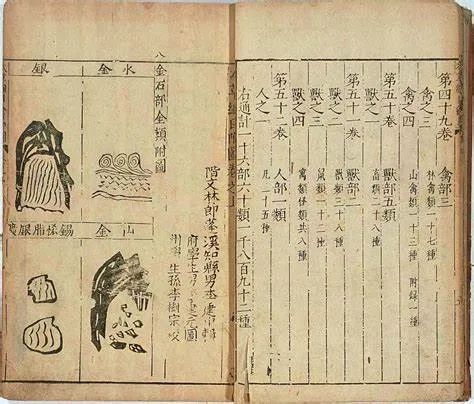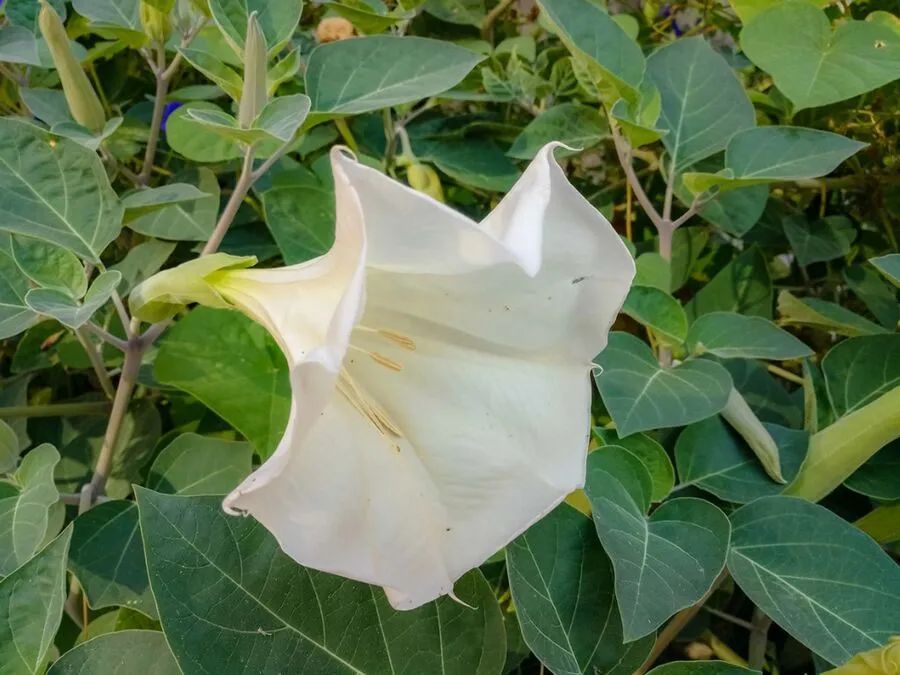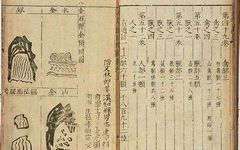
1. Abandoning Literature for MedicineLi Shizhen was born in the 13th year of the Zhengde era of the Ming Dynasty (1518 AD) in Qizhou Town, Qichun County, Hubei Province. His father, Li Yanwen, was a physician known for his medical skills in the surrounding counties and had previously held the position of “Taiyi Li Mu” (a medical officer). However, in the social environment of that time, a physician, no matter how skilled, had a low social status. Therefore, Li Yanwen placed all his hopes on his son, wishing that he could obtain an official position through the imperial examination. According to his plan, his elder son, Li Sizhen, would inherit his practice, while the more intelligent Li Shizhen would take the imperial examination to bring glory to the family. Li Shizhen was frail and sickly as a child, but he was naturally active and loved reading, especially the various legendary stories and curiosities told by adults, as well as the illustrated medical books and herbals collected by his father. In addition, he enjoyed going outdoors to pick flowers and catch butterflies, appreciating the wonders of nature. In his heart, being a skilled physician was far more interesting than taking exams for an official position. However, being a filial child, he had to participate in the imperial examination under his father’s supervision. At the age of 14, Li Shizhen passed the Xiucai examination, but after that, he failed three times in the provincial examination in Wuchang. On the third attempt, he had just recovered from his “bone steaming disease,” which had symptoms similar to pneumonia, including cough, phlegm, and general weakness. During the exam, Li Shizhen fell ill again. After experiencing the torment of illness, he returned home and made his first major decision in life: to give up seeking fame and fortune and turn to medicine. That year, he was 22 years old. Imagine, without this brave decision, the timeless masterpiece Compendium of Materia Medica might never have been born.

2. The Path of a Renowned Physician
However, Li Shizhen’s medical career was not smooth sailing. When he first started practicing medicine, a patient with a high fever and no sweating, suffering from severe headaches, asked Li Shizhen for treatment. Rushing to the patient’s home, Li Shizhen sat on the edge of the bed to take the patient’s pulse. At that time, he diagnosed the patient with wind-cold disease, which required sweating, so he instructed the patient to drink some ginger water before the medicine was prepared, and then to wrap up warmly and sleep to induce sweating. However, just as Li Shizhen was about to leave after preparing the prescription, the patient asked him: “Can I eat fish with wind-cold disease?“ Seeing a black eel hanging in the patient’s home, Li Shizhen smiled and said: “Cooking the eel with ginger is also fine, as long as it induces sweating.” After saying this, Li Shizhen went to treat other patients. When he returned home after a busy day, the patient’s son rushed over, out of breath, saying that his father had eaten the ginger-cooked eel and had developed symptoms of swelling around the eyes, pale complexion, a stiff tongue, and uneven breathing. Hearing this, Li Shizhen was extremely anxious. Fortunately, at that moment, his father, Li Yanwen, returned from gathering herbs. Upon hearing about the situation, he quickly grabbed several herbs and rushed to the patient’s home with Li Shizhen. Li Yanwen administered detoxifying herbs to the patient, and after the condition improved, he then gave him herbs for treating wind-cold disease. Three days later, the patient began to recover. Li Shizhen asked his father what had happened. His father explained that cooking eel with ginger can cause poisoning. This incident had a profound impact on Li Shizhen; he could not sleep for many days, deeply regretting the situation, and made a firm resolution to understand the properties of all medicinal herbs to prevent such life-threatening incidents from occurring again. In 1551, Li Shizhen gained fame for curing the son of Wang Zhu Hou in Fushun County and was appointed as the “Fengci Zheng” (official physician) of the Wang family in Wuchang. In 1556, he was recommended to work in the Tai Hospital and was granted the title of Tai Hospital Judge.
During his tenure, Li Shizhen saw the rich collection of medical books and rare medicinal specimens in the royal palace. Because he regarded fame and fortune lightly, he resigned after a year and returned home. However, this experience in the Tai Hospital greatly enhanced Li Shizhen’s medical skills.
3. Interesting Stories of Materia MedicaOnce, while gathering herbs, Li Shizhen passed through a small village and saw a large crowd gathered. Upon approaching, he found a person drunkenly dancing. After asking the villagers, he learned that this person had drunk medicinal wine made from the mountain eggplant. After returning home, Li Shizhen searched through all the medical books but found that the only record of the mountain eggplant was its proper name, Mandragora.

Li Shizhen was determined to find out the medicinal properties of Mandragora. Thus, he followed the villagers’ method and soaked Mandragora in wine. A few days later, Li Shizhen decided to personally test the effects of Mandragora. He took a small sip, which tasted fragrant, then took another sip, and his tongue and entire mouth became numb. After another sip, he became drowsy, uncontrollably laughing, and lost control of his limbs, eventually collapsing on the ground. The people nearby were frightened and quickly gave Li Shizhen detoxifying medicine. He then woke up. After regaining consciousness, he was very pleased and quickly recorded the origin, shape, characteristics, growth period, and the method of soaking in wine and its effects, as well as the dosage, etc. Some criticized Li Shizhen for being too reckless, to which he replied: “How can one know its efficacy without trying? We cannot use patients as experiments!” Thus, Mandragora emerged as a drug capable of clinical anesthesia, and Li Shizhen’s medical skills became increasingly refined.
4. The Birth of the Compendium of Materia Medica
After the previous eel incident and years of clinical practice, Li Shizhen recognized the importance of materia medica. However, ancient texts were filled with inaccuracies in their descriptions of materia medica. To correct these errors, he traveled extensively, verifying the characteristics of the herbs described in the texts. For example, he examined the Old Crow’s Eye Grass and Dragon Eggplant mentioned in the book “Illustrated Treatise” by Su Song from the Song Dynasty, stating: “Dragon Eggplant and Dragon Pearl are two types of the same plant, found everywhere. The seedlings can be eaten in April, they are soft and smooth… but the green ones are Dragon Eggplant, and the red ones are Dragon Pearl, with similar functions, not very different. Yang Shen’s “Dan Qian Lu” states that Dragon Eggplant is Wu Eggplant, which is a misinterpretation of the materia medica, citing the “Suwen” and “Qianjin” as evidence. It is clear that the Wu Eggplant in the Qianjin formula refers to the Shu Eggplant. Now, I will correct this.” He clarified the confusing names among Dragon Eggplant, Old Crow’s Eye Grass, Dragon Pearl, Wu Eggplant, and Shu Yangquan. Starting in 1552, Li Shizhen decided to compile a book introducing the characteristics of medicinal herbs, which he later named Compendium of Materia Medica. This book is hailed as the “Great Classic of Eastern Medicine” and was included in the World Memory Register in May 2011.ReferencesCompiled by the Editorial Committee of the Popular Science Series “Great Country Traditional Chinese Medicine”, Legendary Stories of Historical Figures in Traditional Chinese Medicine, Capital Normal University Press, June 2019, Page 119Text by: Li Yuan, Edited by: Li Ruting. If there are any improper uses, please feel free to contact us.Click the card below to search for more related articles↓↓↓ Click here to follow and get more TCM-related tips↓↓↓
Step 1“Like👍”
Step 2 to light up“Looking ”
”
Share with more friends



